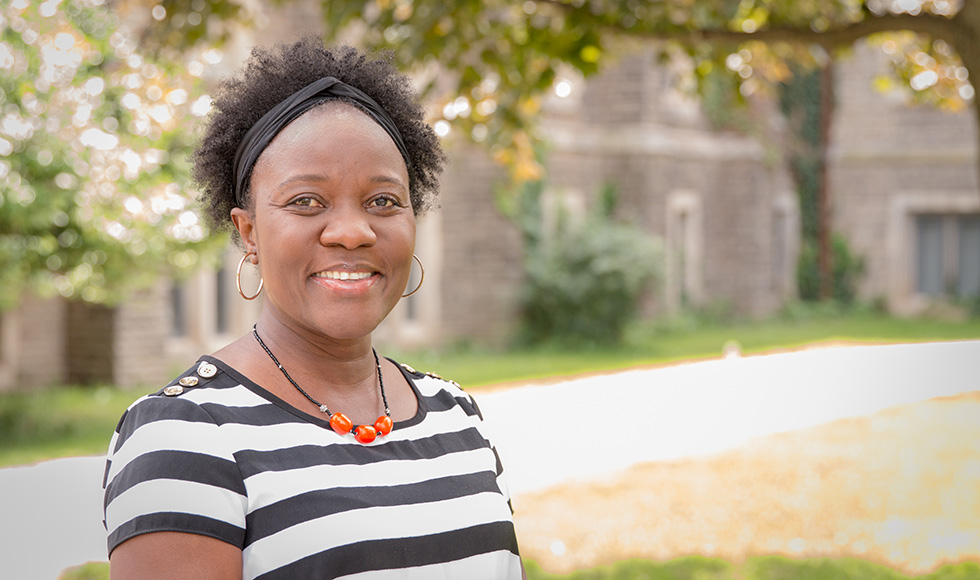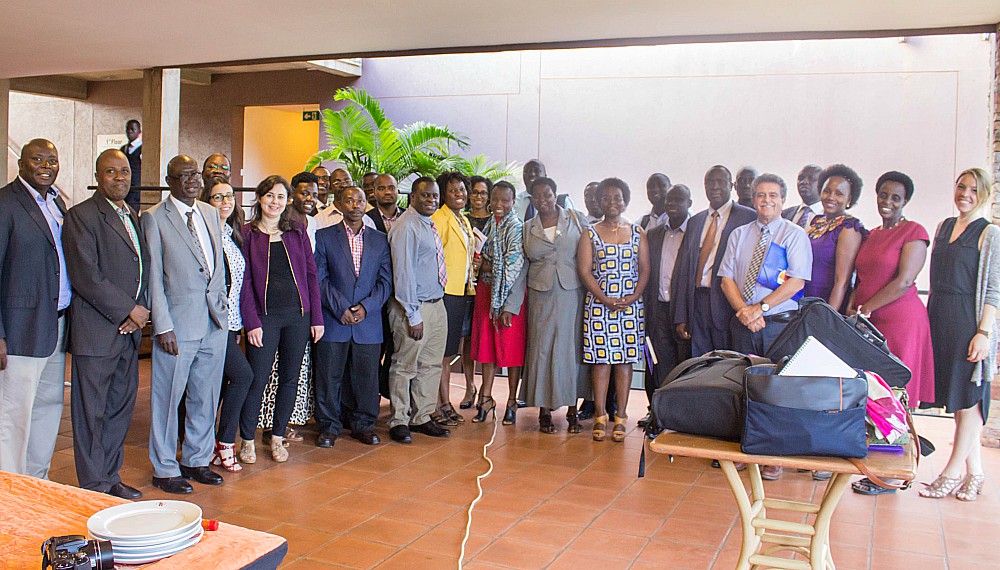Helping low-income countries get the most out of scarce health care resources

BY Erica Balch
February 2, 2018
Lydia Kapiriri knows first-hand the significant challenges facing heath care systems in low-income countries like her home nation of Uganda.
“I grew up in a low-income country and practised medicine in a low-income country, so I’ve lived these problems,” says Kapiriri a Ugandan-trained doctor and an associate professor in McMaster’s Department of Health, Aging and Society. “I’ve experienced how frustrating it is to be a physician running a clinic and not have access to things like antimalarials, when you know that Malaria is the number one killer of children.”
It was experiences like this that prompted Kapiriri to study how health care resources are allocated in low-income countries and understand the factors that drive decision making.
Now, working with a range of stakeholders in Uganda’s health care sector, Kapiriri has developed a tool designed to help policy makers set health priorities, allocate scarce resources and evaluate whether their efforts have been successful. It’s a tool she hopes could one day improve health care not just in Uganda, but in other low-income countries.
“The limited resources for health care aren’t adequate to meet the health care needs,” she says. “So, the question my research asks is how can policy makers be guided in making these tough decisions? If we have only this small pocket of money, what kinds of values and principles should we be thinking of when we’re spreading these meagre resources around?”
The tool – the result of a three-year pilot project funded through a Canadian Institutes of Health Research (CIHR) grant – was developed using qualitative data gathered from more than 100 interviews with decision makers, health care providers and officials from Uganda’s Ministry of Health, as well as with those who influence health policy in Uganda and provide funding for health programs. These include representatives from other governments, the World Bank, the World Health Organization and charitable organizations such as the Gates Foundation.
The project – a partnership with Makerere University’s School of Public Health* – focussed on priority setting and resource allocation processes in five areas of Uganda’s health care system: HIV treatment, maternal health, selected vaccination programs, non-communicable diseases, and health systems.
Using the tool, Kapiriri looked at how decisions were made in these areas and evaluated whether health priorities were effectively implemented. She also used the tool to identify where progress had been made and where improvements to the process were needed.

“If you look at Uganda’s health strategy plan, it’s very well done – the gap is between what is written down and what actually happens on the ground,” says Kapiriri.
“The framework helped us to unpack the factors that make it difficult to implement the priorities in the strategy,” she explains. “It helped us to think about things like what is being prioritized and why? What tools, principles, criteria and values influence the process? Who is participating in the decision-making process and how are they participating? Were the people that actually use the system consulted? Can we create more inclusive, and more transparent processes?”
Kapiriri, along with post-doctoral students Beverley Essue and Lauren Wallace, PhD candidate Donya Razavi and Masters of Global Health students Melissa Janssen and Michelle Lee, recently held a workshop in Kampala that brought together a range of stakeholders including development assistance partners, non-governmental organizations, as well as Ugandan politicians and policy makers, to present her findings and gather feedback on the tool.
“The conversations we had were very useful,” she says. “The framework allowed people to say, ‘ok, we may not be able to get more resources, but we can improve the process. Maybe we can improve the way our meetings are conducted, we can evaluate them and make sure that everyone participates.’ You don’t need more money to do that and those were some of the things that excited people.”
Kapiriri says her next step is to expand the use of the framework to evaluate Uganda’s health care system as a whole. She is also working with the World Health Organization’s Africa Regional Office to explore the possibility of piloting the tool in Kenya, Tanzania and Rwanda.
She hopes the tool will continue to help guide and stimulate discussions around priority setting in the health sector, leading to improvements in the decision-making process and, ultimately, to better health care for those living in low-income countries.
“For policy makers, it may help them to know where the weaknesses are within their priority setting to be able to focus,” she says. “The usefulness of the tool is that you can use it to evaluate the impact not only on health and outcomes, but also evaluate the process and the progress being made – the right process produces the right outcomes.”
*Project collaborators at Makerere University include Dr. Sinding C. , Dr. O.F. Norheim, Dr. F. Sengooba, Dr.S. Kiwanuka and Dr. Kirunga- Tashyobya.


